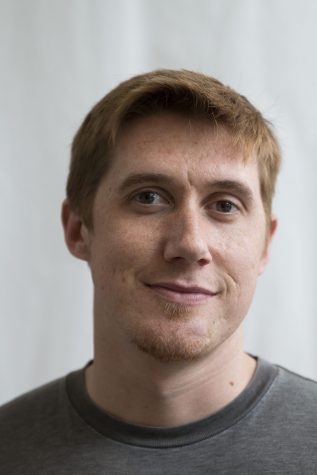Goldsmith Seeks More Funds and Services for Dream Center
Carole Goldsmith, president of Fresno City College asked the State Center Community College board of trustees for increased funding and better facilities for the DREAM Center during the board’s Nov. 1 meeting at SCCCD.
The Development, Relief, Education Act for Minors (DREAM) which became law in 2011, sought, amongst other goals, to provide government aid and financing to students who qualify for deferred action and AB 540, an exemption from paying out-of-state tuition. The bill grants students access to the same benefits and programs as U.S. citizens.
According to a recent study conducted on the FCC campus, at least 1,400 students, exempt under AB 540, qualify for the DREAM act. The present DREAM center has only been able to help about 200 of those students since its inception in 2015.
“Our house is on fire for our DREAMers,” Trustee Eric Payne said at the board meeting.
Goldsmith said one of the main problems the center faces is its location. The report study had described the center as being place-bound and limited in terms of its scope and methods.
“I haven’t seen them doing much of anything,” Angel Sanchez, a graphic design major and former president of the Students Without Borders club, said. “Unless you are connected to them, you don’t know about them. They’re in the shadows pretty much.”
Sanchez also said he expected the program to be more proactive in terms of seeking students who qualify for the DREAM program.
“They have the information on which students are on AB 540,” Sanchez said. “[They could] email them and suggest to them what resources to look up and what they’ll need.”
Financial aid is one such resource and is the biggest advantage of being accepted under the DREAM act.
“Once they get their deferred action, they are able to apply for the BOG waiver so they can get help to pay for their classes,” Sanchez said. “A lot of students who aren’t signed up are paying for classes out of their own pockets.”
Goldsmith told the board that in addition to limited exposure, the center is not able to execute some of its programs, leading to logistical changes. The program was originally designed to service students on a walk-in basis, but those involved with the program felt that was grossly inadequate. The report noted that “research has shown that follow-up services are needed for sustainable success.”
Trustee Miguel Arias said, “It’s hard to see a return on investment when we look at programs with a small amount of students.”
Counselors have now implemented a follow-up service to ensure that students are getting the most from school. This involves actively seeking out students and being “more intrusive,” according to Goldsmith.
The center has had its successes, however. The report notes that the grade point average for students who regularly attend the DREAM center are as much as a tenth of a point higher, on average, than other AB 540 students.
Goldsmith told the board of the college’s vision to expand these successes to more students through broader strategies. The report describes a plan to “recruit undocumented students to serve as mentors.”
This strategy is not a new one. Before ending due to lack of membership, the Students Without Borders club was active in helping students get registered.
“After I heard they [the DREAM center] were there, I thought it would be a good idea for us to work together,” Sanchez said. “We invited them last spring to a few meetings, and they went to a few meetings but they stopped going.”
The DREAM center is currently limited to two part-time counselors and one full-time counselor who works to recruit at the high schools.
No one at the DREAM center was available to comment for this story.

Edward Smith writes for the Rampage and is in his fourth semester at Fresno City College. He majors in Journalism out of a deep love for reporting and...
